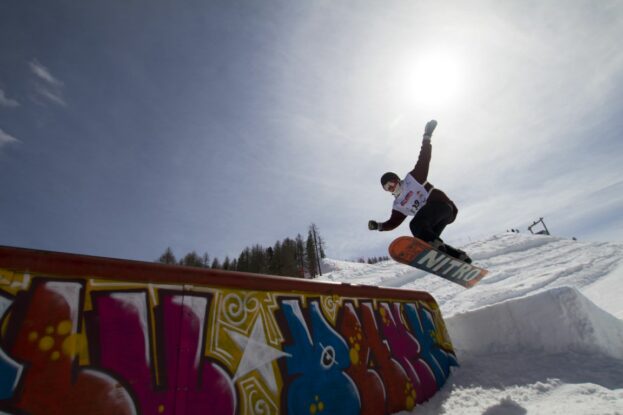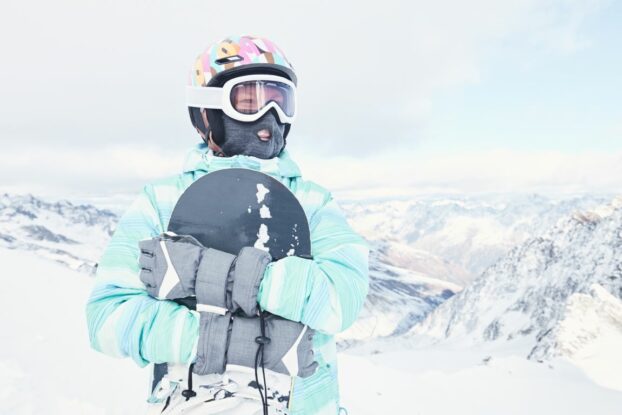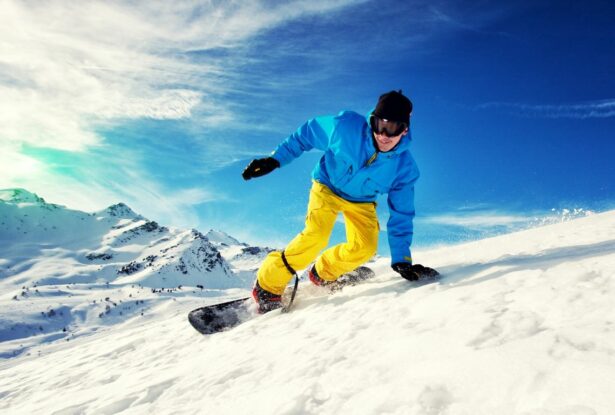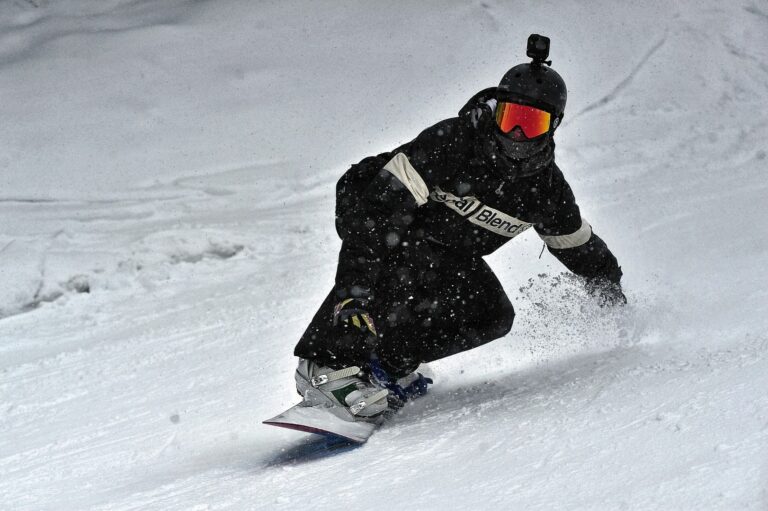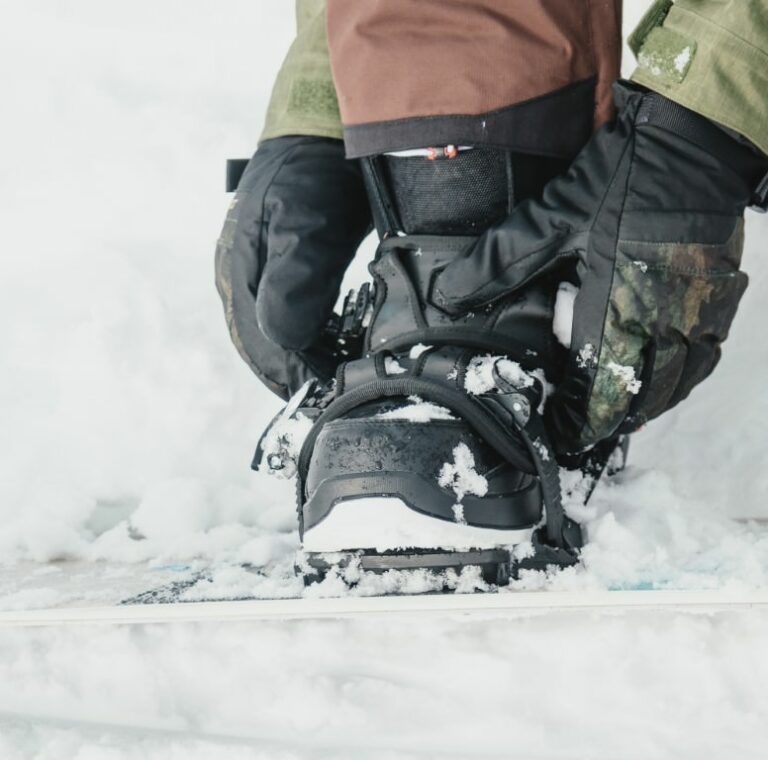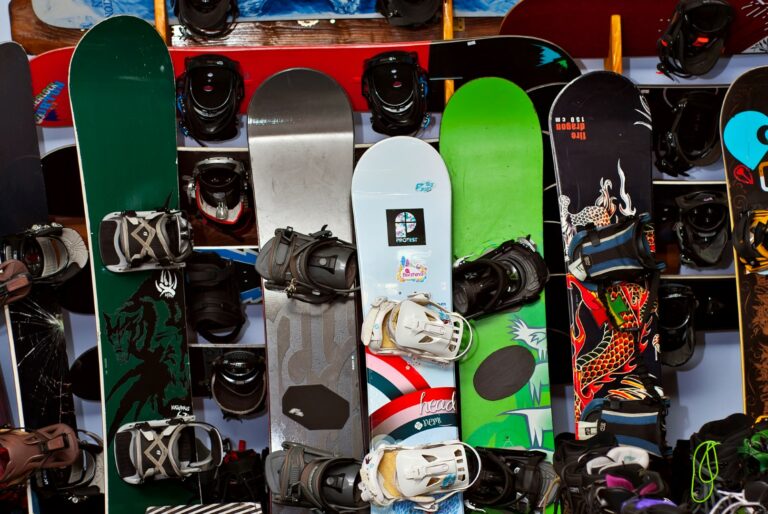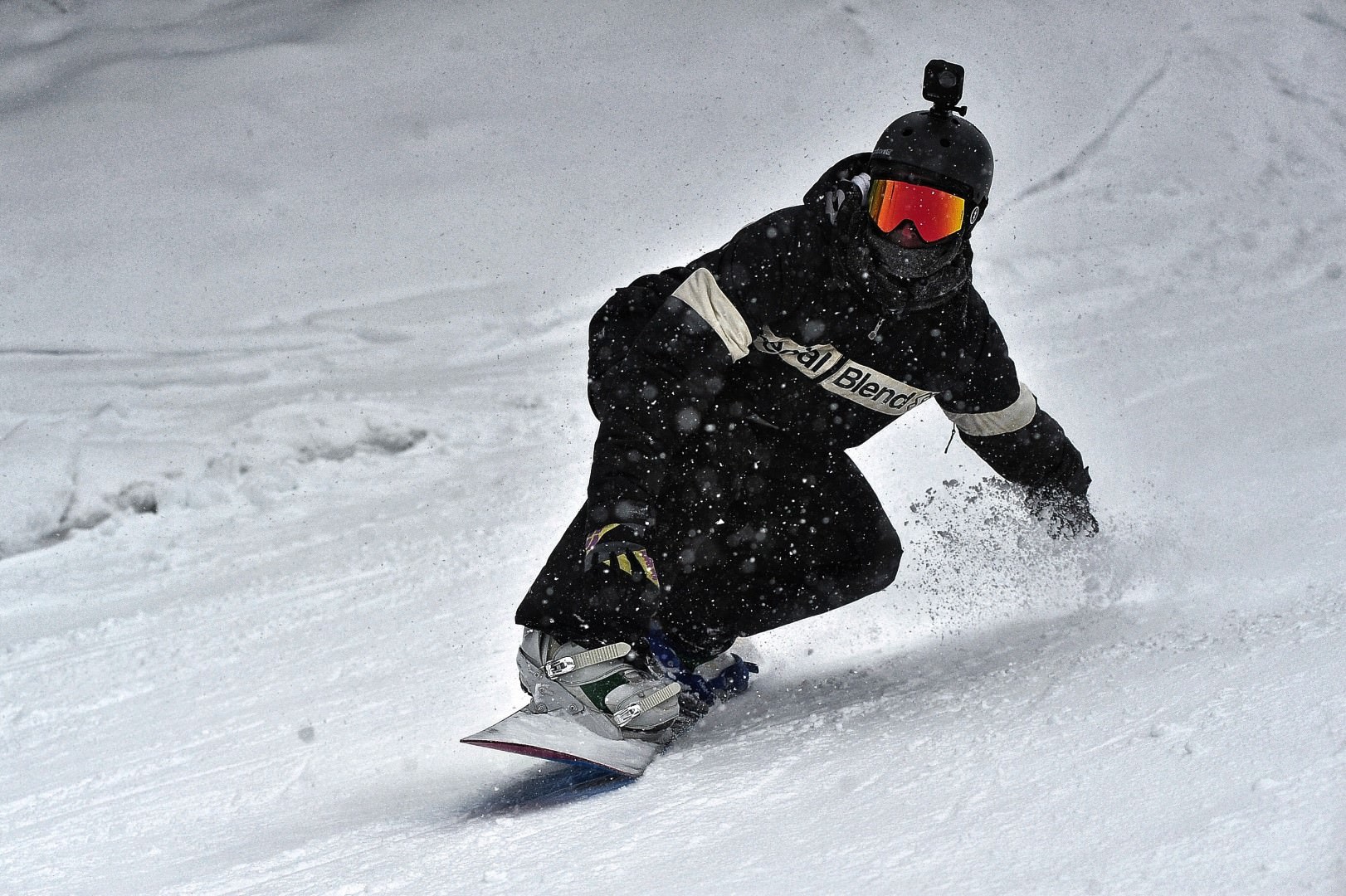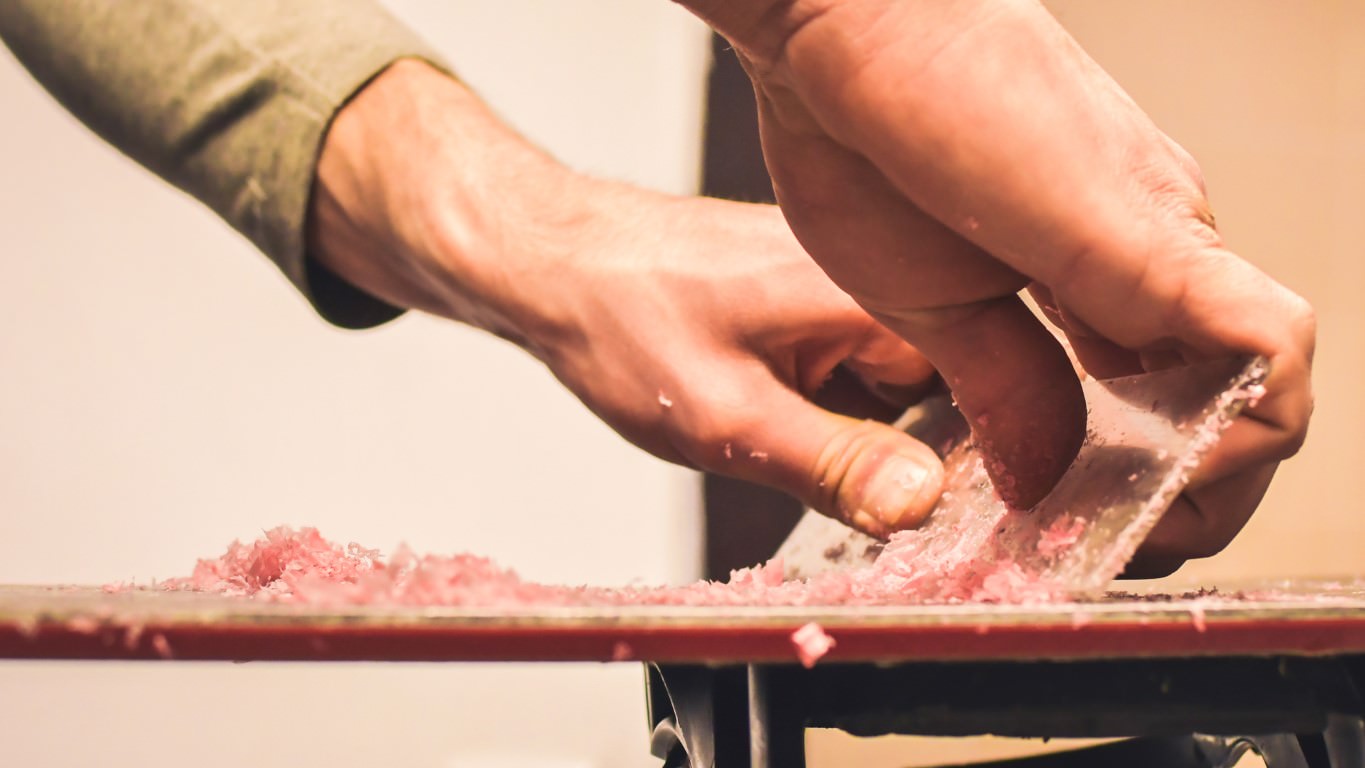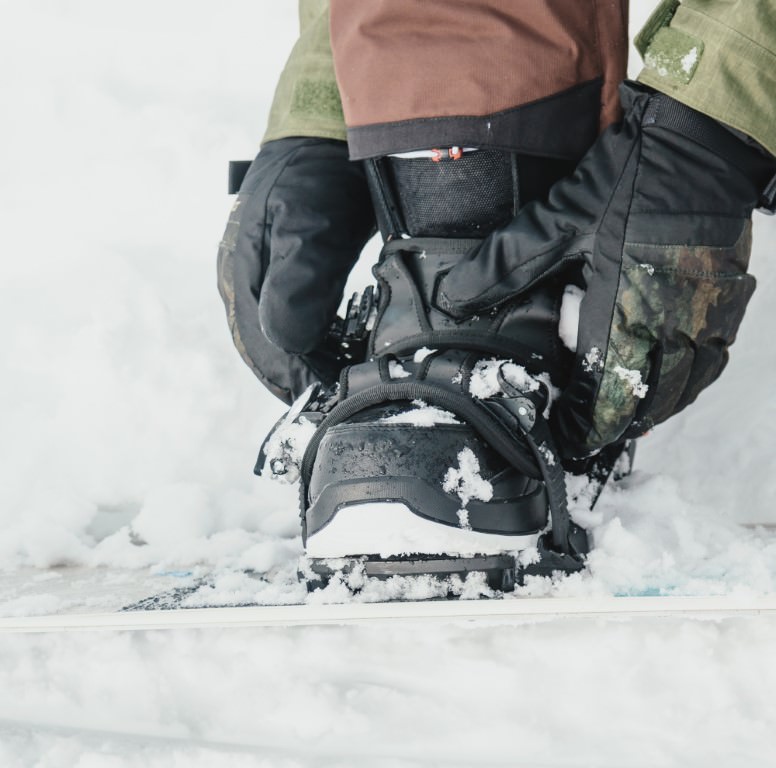Why Snowboarding Attire Is So Important
Snowboarding in inadequate clothing can be uncomfortable, and in severe weather could be life threatening. Most of us have been too cold on the mountain. Normally for me, it’s while I am on the first chairlift of the day and I quickly warm up once riding. But being cold all day is rather miserable and will probably cut your riding short.
Don’t forget that cold temperatures kill people around the world every day. It puts extra pressure on the cardiovascular system, invokes an immune response and can lead to hypothermia or frostbite. But if you wear the right gear snowboarding, it will protect you from the elements and help keep you warm and comfortable; effectively enhancing your enjoyment and performance.
As a rule of thumb, if you are comfortable, you will do something for longer. Which is why wearing the correct gear is so important.
Layering Basics: Building the Perfect Snowboarding Outfit
When it comes to snowboarding attire, layering is key. The three-layer system – base, mid, and outer – is recommended by outdoor experts like REI.
The base layer manages moisture, the mid layer insulates and the outer layer protects from wind and rain. Each layer serves a distinct purpose, and understanding this can make a world of difference to your snowboarding experience.
Thermal Base Layers: Keeping Warm on the Mountain
Often incorrectly called ‘thermals’, base layers are the unsung heroes of snowboarding attire. They wick away sweat from your skin, keeping you dry and in doing so help to keep you warm.
Ever got sweaty in a cotton T-Shirt? It retains moisture which once you stop exercising quickly cools you down. This can be very uncomfortable and potentially dangerous, in cold Alpine conditions it can cause hyperthermia.
Instead, wear high-quality synthetic wicking fabrics like polyester or natural ones like merino wool. Remember, the goal of the base layer is to regulate body temperature through moisture management, not to provide insulation.
However, you can get thicker base layers that provide more warmth or wear multiple baselayers if the conditions warrant it. An important tip is never to tuck your baselayers into your boots – only your socks should be there. So three quarter length base layers are always a good option.
Snowboarding Socks: Combining Comfort and Performance
When it comes to snowboarding socks, thicker isn’t always better and never wear normal socks. A single pair of specialist ski/snowboard socks is sufficient. They are not there to keep your feet warm, the boots will do that, the socks are there to wick sweat away and keep you comfortable.
Ski socks should be a snug fit. Any extra material around your toes or wrinkles on your leg will be uncomfortable. Socks specifically designed for snowboarding provide the right blend of length, cushioning and moisture-wicking properties. Materials to look for include merino wool and synthetic fibers.
Midlayer: The Insulator
Depending on the conditions and how warm your outer layers are, you may wish to wear a midlayer. This is a warmth providing insulator such as a fleece, wooly jumper or insulator jacket. These all work by trapping pockets of warm air close to your body, some also block wind and moisture.
As with the baselayers, the midlayer should be moisture wicking and breathable to allow your sweat to escape. I have worn everything from a fleece to a flannel shirt to a hoodie. As with the baselayers, avoid cotton, it will hold moisture and cool you down. Three quarter length midlayers are also available for your lower half.
I usually wear a technical midlayer (aka an insulator jacket) beneath a shell jacket. But in really cold conditions I add a fleece and in warmer conditions, I swap the tech-mid for a fleece, or sports t-shirt.
Outer layers: Keep Elements at Bay
Your outer layers are what stop the wind, snow and rain from ruining your day. They need to be waterproof and windproof, plus hard wearing and breathable.
Both waterproofness and breathability are measured in numbers in the thousands. The higher the number the better, I personally go for 20,000+ on both scales, but I snowboard all day in all conditions. If you are more of a low intensity and fair weather snowboarder then 10,000+ is normally fine.
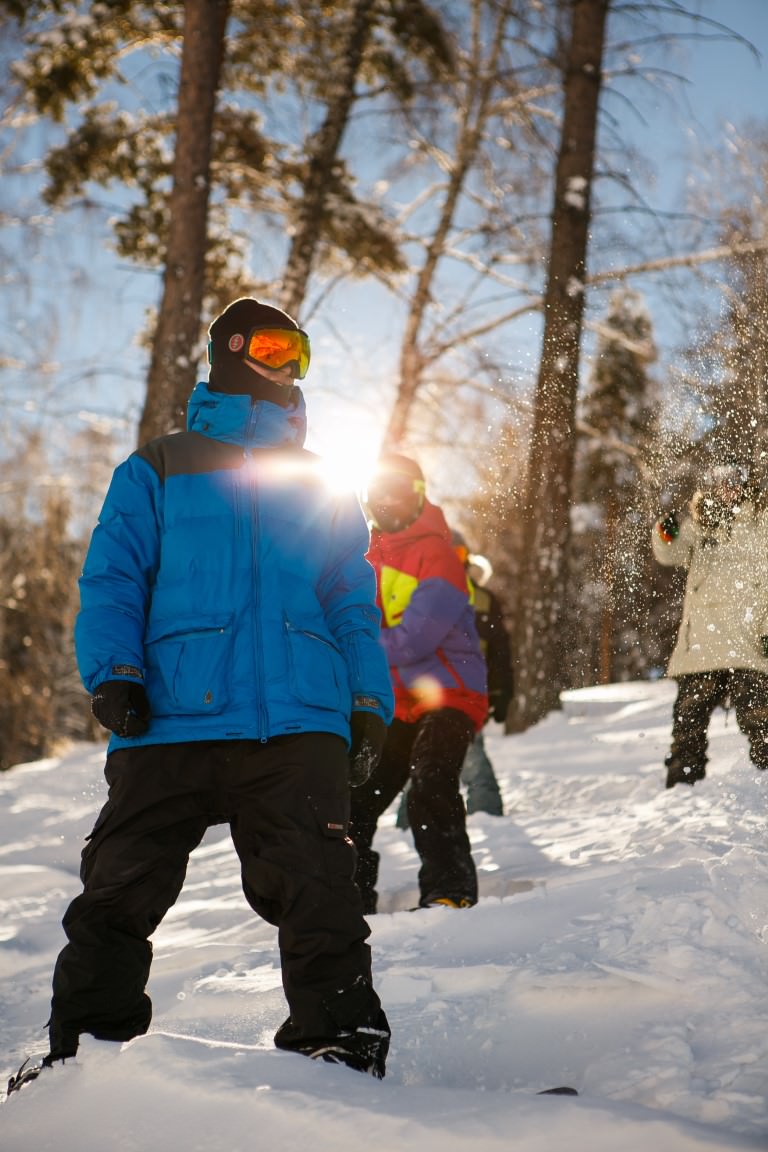
Snowboard Jackets: Styles, Features, and How to Choose
The snowboard jacket is your armor against the elements. Look for features like a powder skirt, ventilation zips, and sealed seams. In my experience, the more pockets the better, a lift pass pocket on the left sleeve is very helpful, and an inside pocket that’s accessible from the outside is great to store your phone away from the cold to prolong battery life.
In terms of style, you can choose between a shell jacket (lightweight, flexible, breathable and more adaptable) and an insulated jacket (warmer, heavier, less flexible and less breathable).
Personally, I prefer a shell jacket, I then vary my midlayer to the conditions. If you have an insulated jacket you may not need a midlayer, or in really cold conditions you can wear a thinner one.
Snowboard Pants: Finding the Right Fit and Function
Snowboard pants, like jackets, should protect you from the elements while providing mobility and warmth. Key features to consider include gaiters (to keep snow out of boots), reinforced cuffs (to prevent wear and tear), vents (for temperature regulation), adjustable waist (useful after a big lunch!) and again pockets.
A good fit allows for a full range of motion without being too tight – snowboarders typically have baggier pants than skiers. As with jackets, you get both shell and insulated snowboard pants.
In my experience, insulated is best as you can always open the vents if too warm, but you’ll welcome the extra insulation when you sit or kneel in the snow. I also feel extra layers on the legs feel are more restrictive than on the upper body. Shell pants are great in warm conditions or if you are very active such as splitboarding or hiking for lines.
Snowboarding Gloves and Mittens: Protecting Your Hands
Your snowboarding gloves or mittens are crucial for keeping your hands warm, dry and protecting against abrasion from the snow. They should be waterproof, insulated, and breathable, with a sturdy grip.
Mittens are generally warmer but offer less dexterity than gloves. Some riders prefer gloves with inner liners for extra warmth. Consider also wrist guards or gloves with built-in wrist protection to prevent injuries.
Snowboarding Helmets: Safety and Style Considerations
In my opinion, a snowboarding helmet is a non-negotiable safety essential for this potentially dangerous sport. It should fit snugly, but not too tight, and sit level on your head. It is worth trying lids on as every head is a slightly different shape. And look for helmets with a size-adjustment system for a secure fit.
I always buy a helmet that has vents for temperature regulation, not only does this keep you cool but helps stop your goggles from steaming up. Some lids even come with built-in speakers for music. While style is a personal preference, safety should never be compromised.
Snowboard Goggles: Enhance Your Vision on the Slopes
Snowboard goggles are essential for clear vision and eye protection. They shield your eyes from the sun, wind, and snow. It is worth noting that not all goggles fit all helmets, ideally you want a snug fit without a gap in the forehead area – so always try them on with your lid.
Each goggle lens color provides optimal visibility in different weather conditions. Some goggles come with interchangeable lenses, magnetic ones are easiest to use. Photochromic lenses adjust to the light – usually within a range suitable for any conditions.
There are spherical and cylindrical lenses. Typically spherical lenses are better with less distortion or glare. Cylindrical lenses are cheaper.
Snowboard Boots: Striking the Balance Between Comfort and Support
Snowboard boots are the most important piece of your snowboarding outfit. If your feet are uncomfortable you won’t have a very good day. Boots are all about fit, so always buy the ones that fit you best, even if this means trying on every pair in Whistler (like I did!).
Boots should fit very snugly and feel slightly too tight when brand new. Try on boots with the socks you plan to wear and do them up as tight as possible. Go up on your toes, there should be zero heel lift/movement. Your toes should slightly touch the end of the boot particularly when bending your knees, if not they are too big.
Boots will ‘pack out’ by around half a size within a week or two of riding. Snowboard brands know this and size accordingly, but a size ten in one brand won’t be the same as a ten in others. Your boots will mold to your feet over time, this can be sped up through heat-molding which is available at many retailers.
Essential Snowboarding Accessories: Don’t Forget These Must-Haves
Beyond clothing, there are essential snowboarding accessories to consider. Including:
- Balaclava, snood or face mask for extra protection against cold and wind.
- Sunscreen. Don’t only wear it on sunny days.
- Beanie and sunglasses for lunch and apres ski.
- Rucksack. A snowboarding backpack can carry snacks, water, spare layers, alternative goggle lens etc. Personally, I put everything in my pockets unless I am riding off piste and need a rucksack for avalanche gear.
FAQs
How do I choose the right size snowboard jacket and pants?
Nine times out of ten the right size snowboarding clothing is the same size as your normal clothing. However, check out the brand’s sizing chart just like you would when buying any clothing.
Can I wear ski Clothing for snowboarding
Yes. Ski clothing and snowboarding clothing are very similar and normally interchangeable. The only major difference is that traditional ski gear is tighter and designed with speed in mind. While snowboarding gear is baggier, more for comfort and ease of movement. But the line between the two has blurred in recent years.
Can I wear regular winter clothing for snowboarding?
Some regular winter clothing is suitable for snowboarding, but much is not. The active nature of snowboarding means you need moisture-wicking, breathable materials that still offer robust protection against the elements.
But Items such as a fleece and most sports clothing, particularly baselayers, are suitable for snowboarding. Just avoid wearing cotton or any materials that hold moisture.
What materials should I look for in snowboarding apparel?
For outerwear, Gore Tex is considered the top material by many for waterproofness and breathability. But most of the major brands have materials that perform similarly, such as Futurelight by The North Face and Lifa Infinity Pro by Helly Hansen.
For base layers, moisture-wicking, odor free merino wool is a great option as it feels warmer than synthetic materials. For midlayers, you can’t beat a fleece! Although if it is cold enough to need more insulation then garments with Polartec are very good, avoid down insulation as it holds moisture.
Are there specific snowboarding clothing brands to consider?
Pretty much all of the big outdoor brands, such as The North Face, Helly Hansen, Kjus, and Patagonia make winter sports clothing that is great. But there are also specific snowboard brands such as Burton, Jones and Nitro that make good gear. Other skate/surf brands focus more on snowboarding than skiing, such as Volcom, Oakley, Quicksilver and Dakine. Ski brands like Picture, Saloman and Atomic all make great gear, just check that the cut suits snowboarding.
Personally, I would say buy the product, not the brand. Figure out what you need, and the look you’d like and buy the best you can get within your budget.
How important is waterproofing in snowboarding clothing?
Waterproofing is critical in snowboarding outerwear to keep you dry and warm. Look for waterproof ratings of 20,000 mm or more to stay dry if you ride all day in any condition. If you buy something with less than 5,000 mm waterproof you won’t stay dry for long in poor weather.
Can I rent snowboarding gear instead of buying it?
Yes, you can rent gear, it’s a great option for beginners or those who don’t snowboard frequently. However, frequent riders will find investing in their own gear more cost-effective and comfortable.

